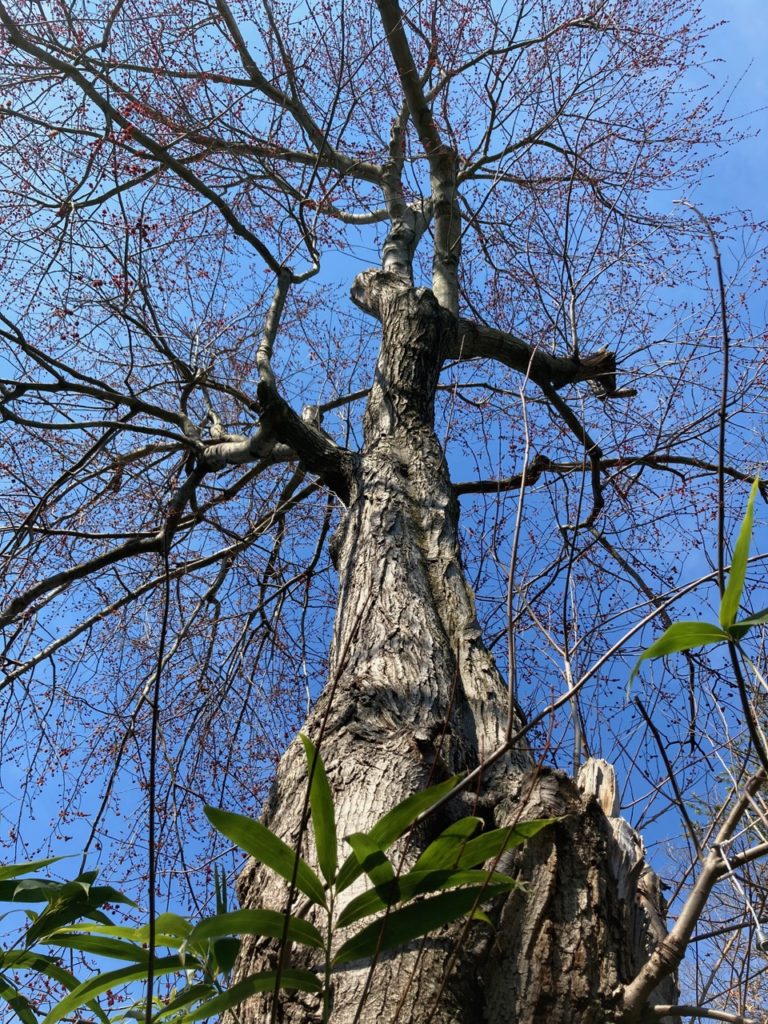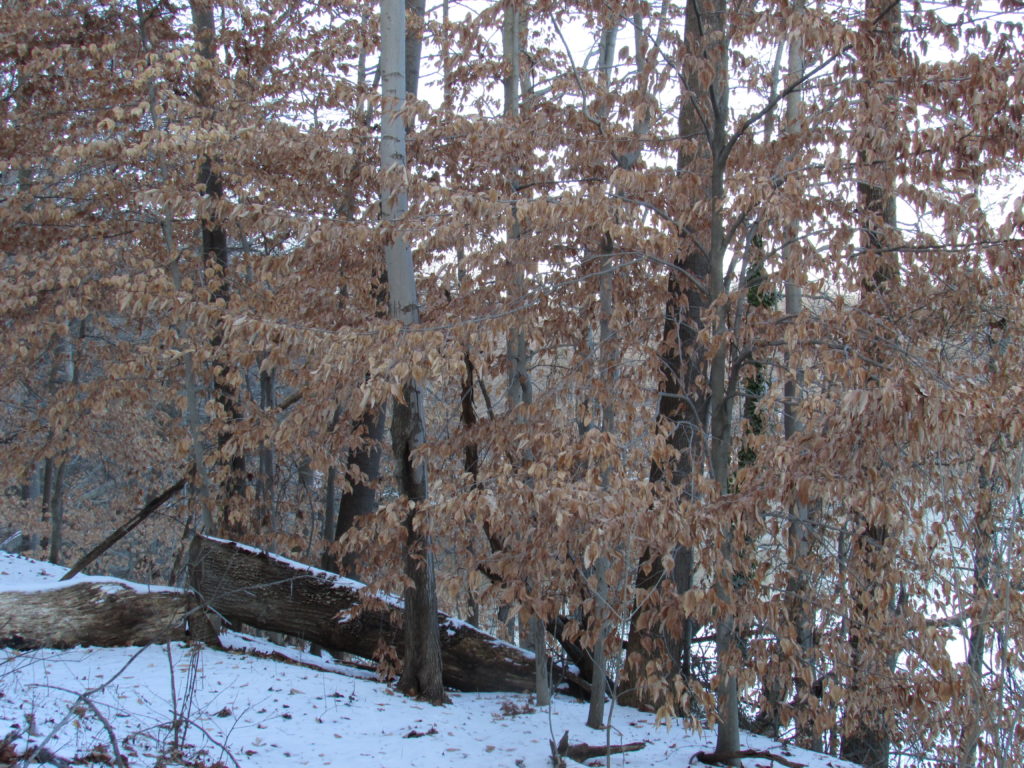Early March is a time of waiting, of nature being poised, pregnant with an entire season ready to be birthed. I feel both excited and terrified. I know the green season is almost upon us. I crave the warmth, the long days, the growth and change, the fruits and vegetables and, this year especially, the ability to see friends and family outdoors. But I also know I’m about to lose control: I will try to swim with the green current but ultimately I will be washed over, carried along and deposited on a new shore, downstream on the river of time, closer to the endless, featureless ocean that’s waiting for all of us. In winter, when nature is dormant, static (or at least so it feels from my vantage point) I feel I can stop, too, that the passage of time almost stops. But I waste the moment, spend almost the entire winter indoors, (because: cold!), tell myself I still have time, and then boom, it’s March, 70 degrees, I fling open my office window for the first time to let in volatiles from the plants in my yard, the precocious crocuses are up, the shy hellebores are bending upward to face the sun, the hopeful daffodil tips are poking above the soil, the fuzzy magnolia buds look like so many green candle flames and the coy camellia is teasing me with pink hints of what’s to come…
This winter I’ve been thinking about the grizzled, disheveled old red maple tree that rules the southwestern corner of my property. I haven’t told anybody this because it feels silly, but in my head, I’ve been calling this tree The Beast. It’s not a huge tree in the global tree scheme, but for a red maple—an early/mid-succession live-fast-die-young sort of tree—it’s pretty impressive. A massive limb calved from it a couple years ago on a beautiful, windless morning, scraping the gutter off my house and leaving a scene of leafy chaos. Fortunately it was dawn and we were all in bed. Since then The Beast been quiet, but as with a nearby volcano, I wonder if it will erupt again.

The thing is, trees are both like us and not like us. One way they are not like us is in how they age. The older they are, the better they are at being trees. The Beast sloughed off a quarter or so of itself, which for a human would be a bodily catastrophe, but the tree just diverted its growth upward into its rangy limbs and kept on going. Its branches are presently festooned with what look from the ground like little red bumps, rock candies perhaps, neatly symmetrical because the maple, unlike most trees, branches oppositely. Those bumps are flower and leaf buds. Their existence tells me something vital: Nearly the entire tree, static though it may appear now, is pulsing with life. Then again, so was the limb that thudded down two years ago.
It’s interesting to compare The Beast to its neighbor, a sprite of a beech tree I planted last winter. If one were to anthropomorphize, which one shouldn’t, one might imagine the scrubby beech sapling looking enviously up at the wizened old maple hogging space and sunlight, while perhaps the maple has not even noticed the diminutive beech moving into the neighborhood below its outer branches. The maple, by turn, could envy the beech its long future, while the maple, much as I hate to think about it, has probably been through many more seasons than it has left.
Even as it goes dormant for winter, the maple seems to surge almost into the next season, putting out tight clusters of promiscuous red buds that leave little to the imagination. It will flower before almost everything; indeed, it’s already starting to. March winds will blow its pollen around, and before long, helicopter-like samaras will appear, elongate, then flutter to the ground in enormous numbers. By the time leaves fully emerge, red maple sex is over and the tree has entered a long green post-coital somnolence.
The beech is on the opposite schedule. For it, fall has yet to end; failing to complete the corky abscission layer where leaf stalk meets branch, its brown, papery leaves stay attached, shivering all winter—a trait called marcescence. Why? Nobody seems to know for sure, but hypotheses include that the leaves protect fragile buds from wind or being eaten, or that spring-falling leaves nourish the tree during the growing season. (But if so, why aren’t all trees marcescent? What’s the benefit of dropping leaves earlier?)

Scientists seem to think marcescence is in some sense a juvenile trait: a behavior of trees that haven’t fully grown up, evolutionarily speaking. That sounds judgy; truth be told, I like thinking of beeches as the overgrown adolescents of the woods. The beech, like all flowering trees, wraps its next-year flowers and leaves in a tight sheath, and eventually those flowers will emerge, pollinate each other and, by late summer, produce little triangular beech nuts (though my little tree is not yet at the flowering stage). But with those spearlike buds it’s currently being coy, hiding them behind gaudy leaves, which will tumble only moments before the buds open.
* * *
Despite their differences, I’ve recently learned that red maple and beech conspire to tell a story about our modern world. Before this area was filled with farms, then houses, it was filled with forests. Those forests burned about once every 10 years, according to studies of fire scars in old trees and other evidence hidden in the landscape. Some of those fires might have been due to lightning, but most were probably set by people. Those people weren’t arsonists: Quite the opposite, they were improvers. When it comes to trees, they wanted ones that would feed them. Maples and beeches were less valued than oaks, hickories and chestnuts with their rich, ample nuts. Conveniently, the thin bark of maples and beeches doesn’t resist flames well; applying fire to the land selected for a more nourishing forest. Brilliant.
We “modern” folks have separated our food-getting from our trees; the non-productivity of maples and beeches is thus irrelevant to us. We’ve also forgotten how to use fire—an intentional forgetting, perhaps. So our woods are filling up with maple and beech at the expense of oak, hickory and pine. (Chestnut was, of course, taken out by blight.) Red maple is now the most common tree in both Maryland and Virginia. In fall this makes the woods more beautiful than the dull duns of oak leaves would. Red maple in particular has benefited from breeders’ attention, and in cities, Autumn Flame, Red Sunset and October Glory compete for our lusty attention each fall.
Beech isn’t as widely planted—in fact, mine is the only one I know of in my small town—but zoom out a bit and one finds that it, too, is ubiquitous. Beech is the most common tree in Washington, D.C.—red maple is second—and among the top 10 in both Maryland and Virginia. In addition to lack of fire, the fact that deer don’t prefer beech is also boosting its fortunes. The present-day dominance of maple and beech isn’t any kind of natural situation; in fact, it’s as much a symptom of humanity’s hand on the land as are houses and highways.
An ecologist recently told me that in her opinion, the disappearance of fire-adapted oak-hickory-pine forests in the eastern U.S. has reached crisis stage. I have to admit that amid all the other crises—political, economic, covid, climate, environmental justice, racial justice—I’m finding it hard to really feel, in my body, the urgency of this one. I struggle to see my maple and my beech as symbols of ecological disaster.
I directly control only about an eighth of an acre, so I don’t feel personally responsible for rescuing our woods; my maple and beech can stay put. But as a writer I do feel responsible for figuring out how to feel—and to convey—the urgency of this slow-moving, mostly unheeded crisis. Perhaps with this last bit of suspended time before spring washes over us all, we can peel back a layer of illusion, shed some of our innocence and learn to better see our woods as they are—beautiful but troubled, and, like us, in need of healing.